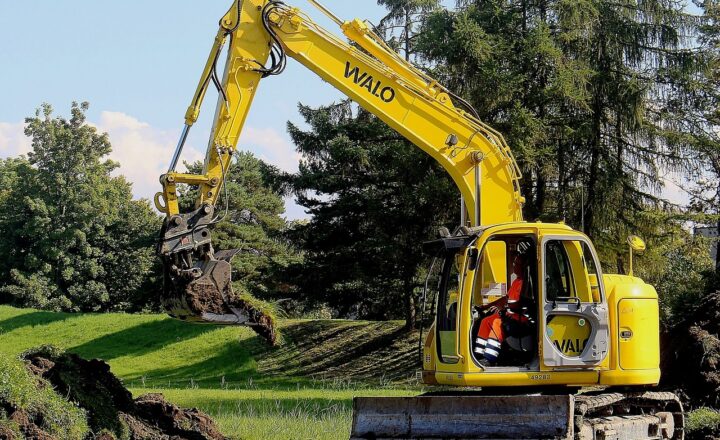
The Indus Valley Civilization, one of the world’s oldest urban cultures, flourished in the northwestern regions of the Indian subcontinent from around 2600 BCE to 1900 BCE. Spanning modern-day Pakistan and northwest India, this ancient civilization was known for its advanced urban planning, architecture, and social organization. However, around 1900 BCE, the Indus Valley Civilization mysteriously began to decline, leading to one of the most perplexing questions in archaeology: what happened to this remarkable society?
1. Exploring the Indus Valley Civilization
The Indus Valley Civilization, also known as the Harappan Civilization, consisted of major urban centers like Harappa and Mohenjo-Daro. Both cities showcased remarkable town planning, featuring grid-like street layouts, sophisticated drainage systems, and standardized fired-brick buildings. The people of the Indus Valley engaged in various trades, including agriculture, metallurgy, and handicrafts. They even developed a writing system that remains undeciphered to this day, thus adding to the mystery surrounding their fate.
Notably, the civilization thrived along the banks of the Indus River, benefiting from fertile floodplains conducive to agriculture. This agricultural success contributed to population growth and complex societal structures, including the emergence of rulers, artisans, and merchants.
2. The Decline of the Indus Valley Civilization
The decline of the Indus Valley Civilization is shrouded in mystery, with several theories proposed by historians and archaeologists. Some major reasons that have been suggested include:
- Environmental Changes: Changes in climate may have drastically affected agricultural practices. Evidence suggests that around 2000 BCE, the region saw a shift towards aridity, leading to a decline in the fertility of the land. This could have resulted in crop failures and food shortages, compelling inhabitants to abandon their cities in search of more fertile land.
- River Shifts: The course of the Indus River may have changed over time due to tectonic activity or sedimentation. As the river shifted, areas housing major cities could have been cut off from water supplies, leading to economic decline and migration.
- Invasion and Warfare: Some historians theorize that the gradual decline could have also been precipitated by migrations or invasions from surrounding groups, including Indo-Aryans, who were known to have moved into the subcontinent around that time. However, archaeological evidence for warfare in the Indus Valley remains scarce.
- Socio-Economic Factors: A breakdown in trade networks and internal social structures could have also played a significant role. As the civilization declined, trade may have lessened, leading to economic instability. This stress could have caused social unrest and contributed to the societal collapse.
The diverse nature of these theories hints that a combination of factors may have worked in tandem to cause the civilization’s gradual decline rather than a single catastrophic event.
3. Archaeological Discoveries and Theories
Archaeological excavations have uncovered a wealth of artifacts that provide clues about the daily lives of the Harappans. Pottery, seals, weights, and tools reflect the advanced nature of this civilization. However, the undeclared fate of the civilization leaves a lingering intrigue.
Many researchers continue to explore Harappan sites, leading to ongoing discoveries:
- Urban Planning Insights: Findings illustrate that cities were designed with an understanding of urban planning, drainage, and sanitation, suggesting a highly organized government structure. Understanding their governance might provide clues to why the civilization eventually crumbled.
- Trade and Economy: In-depth studies of artifacts have revealed extensive trade connections, particularly with Mesopotamia, symbolizing the civilization’s economic prosperity. Examining how trade might have changed or collapsed offers insight into the socio-economic factors that contributed to their disappearance.
- Cultural Continuity: Some researchers hypothesize that rather than a total collapse, the civilization may have fragmented, leading to cultural continuity in the regions where former Harappans migrated. The emergence of later cultures could possess influences from the Indus Valley Civilization—a topic still being dissected by historians and archaeologists alike.
4. Lasting Legacy and Cultural Impact
Despite its decline, the Indus Valley Civilization left an indelible mark on the history of the Indian subcontinent. Several aspects of their culture, including urban planning, crafts, and trade techniques, influenced later civilizations.
Moreover, the enigmatic Indus script has captivated linguists and historians, sparking debates about the potential for unraveling its secrets. As languages evolve, understanding the roots of the Indus Valley Civilization’s communication might provide insight into the region’s history.
This civilization also serves as a reminder of the fragility of urban societies. Their rise and fall illuminate essential lessons about sustainability, resource management, and resilience—lessons that resonate with strategies in today’s world faced with climate change and societal pressures.
Conclusion: The Unsolved Riddle
The disappearance of the Indus Valley Civilization remains one of history’s great mysteries. Each theory offers a window into the complexities of the civilization and its eventual decline, but none provide a definitive answer. As ongoing excavations and advancements in technology continue, we inch closer to understanding the threadbare reality of what happened to this remarkable ancient civilization. The study of the Indus Valley offers valuable insights not only into past human behavior but also serves as a commentary on our societal resilience in the face of change.
As historians and archaeologists strive to piece together this enigma, the Indus Valley Civilization teaches us about the interconnectedness of environmental, social, and economic factors that shape the destiny of societies across time and space.
Through careful investigation and discovery, we hope to illuminate the shadowy corners of our past, shedding light on a civilization that once thrived brilliantly before drifting into the mists of time.







